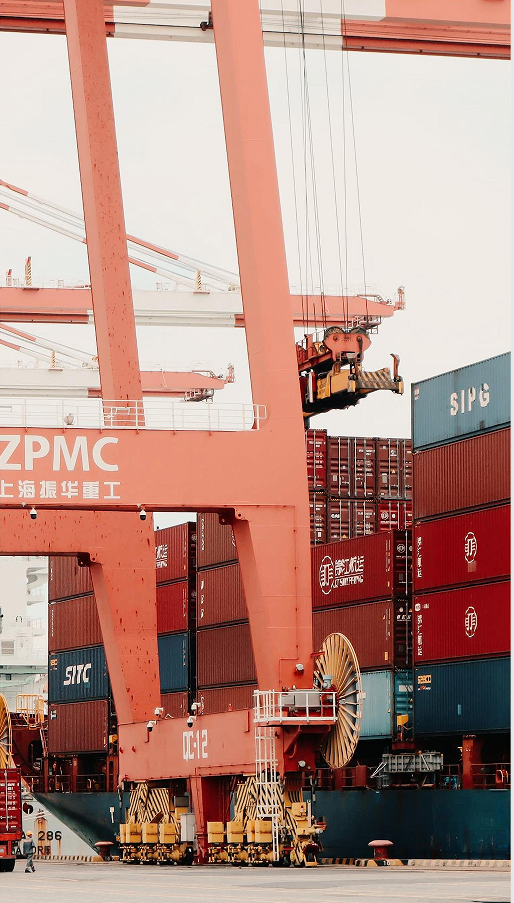Paplašinoties globāli, uzņēmumi tagad saskaras ar sarežģītām kravu pārvadāšanas loģistikas problēmām visā pasaulē, kuras modernajā sabiedrībā kļūst arvien sarežģītākas. Vairāku transporta procesu integrācija visā pasaulē iegūst arvien lielāku nozīmi. Multimodālais transports ir globāla transporta metode, kas vienkāršo kravu pārvadāšanas loģistiku, apvienojot auto, dzelzceļa, gaisa un jūras transportu visā pasaulē. Šajā rakstā mēs detalizēti aplūkosim globālos pārvadājumus un multimodālā transporta būtisko lomu.
Multimodālā transporta izpratne
Piegādes loģistika tagad ietver vairāku transporta veidu integrāciju, tostarp ceļu, dzelzceļu, gaisu un jūru. Ar vairākiem transporta veidiem pieejamiem, piegāde tagad ir uzticamāka. Atkarībā no izmaksām, ātruma un transporta veida, uzņēmumi vienmēr izvēlēsies piemērotāko metodi. Turklāt dažādu transporta līdzekļu kombinācija padara pārvietošanās izmaksas uzticamas, ievērojot termiņus.
Izmaksu pamatā balstīti priekšrocības
Multimodalitātes transporta izmaksu efektivitāte ir galvenais ieguvums. Uzņēmumi, kas izmanto multimodālo transporta pieeju, var gūt labumu no atsevišķu pārvadātāju atšķirīgām cenu noteikšanas stratēģijām. Piemēram, preču pārvadājumi pa jūru. Lai gan šis variants ir ievērojami lētāks, tas aizņems daudz laika. Lai gan gaisa transportam ir dārgāk, tas ir ātrāks. Ja izmanto gaisa un jūras transporta kombināciju, var samazināt kuģniecības izmaksas. Visbeidzot, multimodālais transports samazina kavēšanās iespējamību, kas uzņēmumam var būt dārga kavēšanās gadījumā.
Lielāka elastība
Elastīgums ir galvenā daudzveidīgas transportēšanas priekšrocība. Uzņēmumi ikdienas darbībās saskaras ar dažādām problēmām, piemēram, mainīgu pieprasījumu, piegādes ķēdes problēmām un pēkšņiem regulējuma ierobežojumiem. Daudzveidīga pieeja nodrošina elastīgumu, kas ļauj uzņēmumiem ātri pielāgot savas pārvadāšanas stratēģijas, lai risinātu esošās problēmas. Piemēram, ja preci jāpārvadā jūras ceļā, bet laiks ir nelabvēlīgs, to var pārsūtīt ar gaisa vai sauszemes transportu bez būtiskiem laika ierobežojumiem. Šāds elastīgums ļauj uzņēmumiem izpildīt savas saistības pret klientiem, kas ir kritiski svarīgi, lai uzturētu labas darījumu attiecības, pat ja rodas negaidītas problēmas.
Uzlaboti piegādes laiki
Kuģniecības nozarē precīza piegāde ir operatīvas jaudas un klientu apkalpošanas rādītājs, kas ir primārs klientu apmierinātībai. Piegādes grafikus var izpildīt efektīvāk, izmantojot daudzveida transportu. Stingrākus piegādes grafikus var izpildīt, ja noteiktas maršruta daļas tiek veiktas ar noteiktiem transporta veidiem, piemēram, gaisa transportu, kas ir visātrākie. Turklāt ar modernām tehnoloģijām ir iespējams veikt kravu reāllaikā monitorēšanu un izsekot, kas uzlabo klientu apkalpošanu un piegādes precizitāti.
Videi draudzīgums
Augot bažām par klimata pārmaiņām, kuģniecības un transporta uzņēmumi arī meklē vidi draudzīgākas darījumu veikšanas metodes. Daudzveida transports izvairās no vides kaitējumu nodarījoša transporta izmantošanas. Šādu uzņēmumu emisijas tiek samazinātas, ieviešot efektīvākus transporta veidus, piemēram, dzelzceļu. Daudzveida transporta ietvaros tiek veicināta intermodu konteineru izmantošana, kas uzlabo enerģijas izmantošanu kravāšanas un izkravāšanas procesā.
Nākotnes ieskati un tirgus tendences
Kuģošanas un loģistikas bizness ātri mainās kopā ar globālās kuģošanas attīstību. Tagad uzņēmumiem ir vieglāk izveidot kuģošanas sakarus, izmantojot dažādas transporta izmantošanas iespējas, un to sauc par daudzveida transportu. Šī ir lieliska ziņa uzņēmumiem, jo, kļūstot ilgtspējīgai attīstībai un ekonomizēšanai par globālu prioritāti, pieprasījums pēc daudzveida transporta tikai pieaugs. Arī šeit lielu lomu spēlēs attīstīta tehnoloģija, jo automatizācijas un mākslīgā intelekta ieviešana noteikti palielinās kuģošanas efektivitāti, elastīgumu un ražīgumu. Uzņēmumi, kas izmantos šādas iespējas, noteikti saglabās konkurētspēju nepārtraukti mainīgā tirgū un spēs radīt vērtību galalietotājiem.

